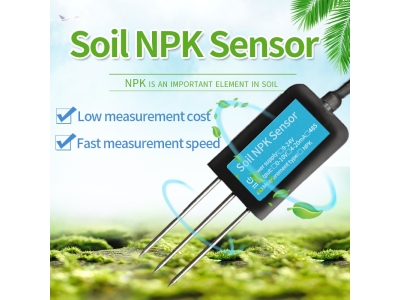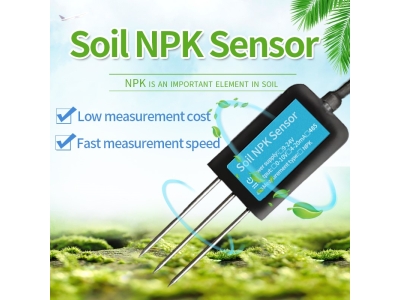Agriculture has always been the backbone of human civilization, providing sustenance for millions of people around the globe. With the world population projected to reach 9 billion by 2050, the demand for food is set to increase significantly. This puts enormous pressure on farmers to produce higher yields while minimizing environmental impact.
To achieve these objectives, farmers need to adopt innovative technologies that optimize crop growth while reducing water consumption and fertilizer use. One such technology that has revolutionized farming practices is the use of soil sensors. In this article, we will explore how soil sensors work and their impact on agriculture.
Soil sensor technology: Soil sensors are electronic devices that are placed in the ground to measure key soil parameters. These include soil moisture, temperature, pH, and nutrient levels. By collecting real-time data on these parameters, farmers can make informed decisions about irrigation, fertilizer application, and other farming practices.
Soil sensors typically consist of two main components: a probe with sensors and a transmitter. The probe is inserted into the soil, and the sensors measure various soil parameters. The transmitter sends the data wirelessly to a computer or mobile device, where it can be analyzed and used to inform management decisions.
Soil Moisture sensing: Soil moisture is one of the most critical soil parameters that affect crop growth. Soil sensors used for moisture sensing measure the amount of water held in the soil. This information can help farmers optimize irrigation practices, ensuring that crops receive the right amount of water at the right time.
Over-irrigation can lead to waterlogging, which can damage plant roots and reduce yield. Under-irrigation can also reduce crop yield significantly. Soil sensors can help farmers avoid these issues by providing real-time data on soil moisture, allowing them to adjust irrigation practices accordingly.
Soil Temperature sensing: Soil temperature is another essential parameter that affects crop growth and development. Soil temperature sensors measure the temperature of the soil at different depths. This information can help farmers optimize planting times, ensure proper seed germination, and monitor plant growth.
For example, seeds planted in cold soil may take longer to germinate, reducing yield. By monitoring soil temperature, farmers can ensure that soil is sufficiently warm before planting, allowing for optimal seed germination and plant growth.
Soil pH sensing: Soil pH is a measure of the acidity or alkalinity of soil. Different crops require different soil pH levels for optimal growth and yield. Soil pH sensors measure the pH of the soil, providing farmers with essential data to make informed decisions about lime and fertilizer application.
Soil pH levels that are too high or too low can lead to nutrient deficiencies or toxicities, reducing crop yield. By monitoring soil pH, farmers can adjust fertilizer and lime application rates to ensure that soil pH is optimal for crop growth.
Nutrient sensing: Soil sensors can also measure nutrient levels in the soil, including nitrogen, phosphorus, potassium, and more. This information can help farmers optimize fertilizer application rates, reduce fertilizer waste and runoff, and improve crop yield.
Over-fertilization can lead to increased fertilizer runoff, which can contribute to water pollution. Under-fertilization can reduce crop yield significantly. Soil sensors can help farmers find the right balance by providing real-time data on soil nutrient levels, enabling them to apply the right amount of fertilizer at the right time.
Benefits of soil sensors: The use of soil sensors in agriculture offers several benefits, including:
Improved crop yields: Soil sensors enable farmers to optimize crop growth by providing real-time data on critical soil parameters. This helps farmers make informed decisions about irrigation, fertilizer application, and other management practices, leading to higher crop yields.

Reduced input costs: By optimizing irrigation and fertilizer application rates, farmers can reduce input costs while maintaining high yields.
Environmental benefits: The optimized use of water and nutrients can reduce fertilizer waste and runoff, leading to improved soil quality and reduced environmental impact.
Increased efficiency: Real-time data provided by soil sensors enables farmers to make management decisions quickly and efficiently, improving overall farm efficiency.
Challenges and Future Developments: Despite the benefits of soil sensors, there are still some challenges that need to be addressed. One of the biggest challenges is the cost of the sensors, which can be a barrier to adoption for small-scale farmers.
However, advancements in technology are bringing down the cost of soil sensors, making them more accessible to farmers. Additionally, new developments, such as the use of drones to collect data fro






